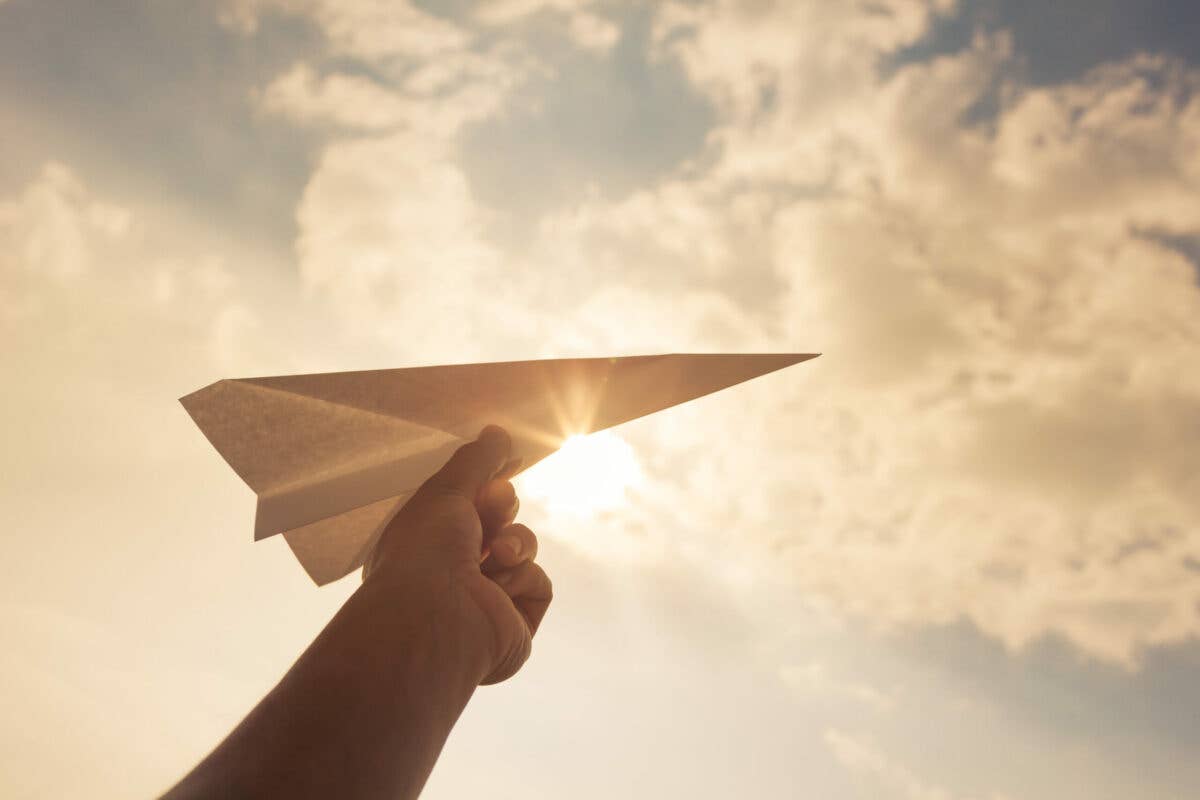Boeing Engineers Set New Distance Record With Paper Airplane
The engineers broke the Guinness World Record for flying a handmade paper airplane with an innovative design and simulations.

Two Boeing engineers now hold the Guinness World Record for flying a handmade paper airplane after it flew 290 feet. [Credit: Shutterstock]
Many aerospace engineers can trace their interest in designing and building airplanes back to paper airplanes they created as children, often for flying for distance contests. Sometimes, that passion never goes away.
Two Boeing engineers—Dillon Ruble and Garrett Jensen—who are second- and third-generation Boeing employees, now hold the Guinness World Record for flying a handmade paper airplane. The pair, who are based in St. Louis, set the new record in Crown Point, Indiana, in December of 2022.
Record-Breaking Flight
The Ruble and Jensen design flew 290 feet, which, for perspective, is slightly less than the length of a U.S. soccer field.
Ruble and Jensen both studied aerospace and mechanical engineering at Missouri University of Science and Technology. Their design broke the previous record of 252 feet, 7 inches, set by a team from Malaysia and South Korea in April 2022.
The previous record was set in 2012 by Joe Ayoob and paper airplane designer John M. Collins, who flew a paper airplane a distance of 226 feet, 10 inches.
It Takes a Village
During the paper airplane distance competition, which was held at an indoor football stadium, Ruble and Jensen were supported by team members Nathan Erickson, Jeremy O'Brien, and Pat Neiman.
Their jobs ranged from setting up the table to calibrating and properly configuring equipment to taking accurate measurements. Flags were used to mark the distance of previous records. Glen Boren and Fire Chief Mark Baumgardner assisted in measuring the distance.
The Flight, By the Numbers
The winning design was inspired by hypersonic aerospace vehicles. According to Jensen, the pair used A4-sized paper, which is 8 by 11 inches, in the heaviest weight they could find, because the heavier the paper the greater the momentum when it is thrown. They spent several hundred hours developing the design and practicing the throw.
It takes more than 20 minutes to accurately fold the record-breaking paper airplane design, which Ruble noted, "Is a little different from your traditional ‘fold in half, fold the two corners to the middle line down the middle.’ It’s pretty unique in that aspect. It’s definitely an unusual design."
According to Ruble, the airplane is named Mach 5 because hypersonic vehicles travel at speeds over Mach 5, which is five times the speed of sound.
On the day of the attempt, they achieved the record on the third attempt with Ruble throwing.
Jensen, ever the engineer, explained the math of the event, saying, “We found the optimal angle is about 40 degrees off the ground. Once you’re aiming that high, you throw as hard as possible. That gives us our best distance. It took simulations to figure that out. I didn’t think we could get useful data from a simulation on a paper airplane. Turns out, we could.”

Subscribe to Our Newsletter
Get the latest FLYING stories delivered directly to your inbox






